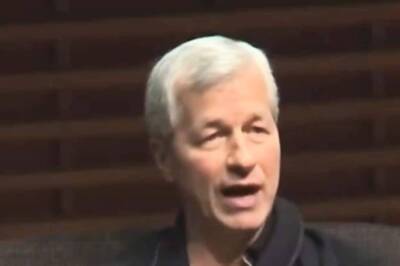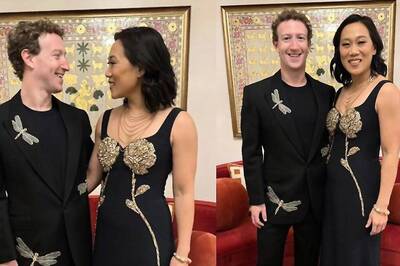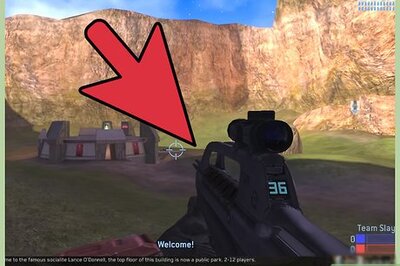
views
Prime Minister Narendra Modi’s virtual interaction with the beneficiaries of 13 Centrally-sponsored government schemes from Shimla’s Ridge Maidan on Tuesday was preceded by weeks of preparations involving at least nine ministries and state governments.
It included massive logistical arrangements, large-scale communication activities and inviting beneficiaries and eminent persons.
The PM’s nationwide interaction with select beneficiaries of government schemes from several districts was part of a grand ‘Garib Kalyan Sammelan’ organised to mark eight years of his government. An estimated 17 lakh people from across the country were to participate in the programme.
A joint advisory sent to all chief secretaries of states and Union Territories on May 16 by nine secretaries to the Central government throws light on the massive planning and preparations.
News18 has accessed the advisory. It requested the state and district interactions to organise state and district interactions at the State, UT capitals and district headquarters and assist the KVK centres as well. This is because parallel events were also organised at KVKs with the 11th installment of the PM Kisan Samman Nidhi getting transferred to the beneficiaries on the same day.
While the event was coordinated by the Ministry of Rural Development and a team of four joint secretary level officers was constituted to work closely with the states on the event, the scheme beneficiaries, with whom PM Modi directly interacted, were finalised by the Central ministries in consultation with the states and UTs, as per the advisory.
Involved in the planning process were Ministries of Rural Development, Housing and Urban Affairs, Petroleum and Natural Gas, Health and Family Welfare, Agriculture and Farmers’ Welfare, Women and Child Development and departments of drinking water and sanitation, financial services, food and public distribution.
INVITATIONS TO BENEFICIARIES, DIGNITARIES
As part of the preparations for the district-level events, the states had to invite Central and state ministers, MPs, MLAs, MLCs, Mayors and Chairpersons of Local Bodies, among others.
About 20 beneficiaries for each of the 13 schemes, families of freedom fighters, members of Panchayati Raj Institutions, eminent citizens of the district as well as administrative officials, bankers, civil society organisations were among those invited.
The advisory stated about 500 or more participants could take part in a district-level function and a common set of beneficiaries could represent more than one scheme.
It asked the state and UT governments to organise larger events at their capitals and invite chief ministers, LG or Administrator to preside over them and request the attendance of Central, state and UT ministers in any district of their choice.
THE LOGISTICS
The advisory sought large-scale logistical arrangements at the programme venue, so that the participants could watch and join the national event through virtual mode, in which the PM would interact with some beneficiaries of one or more districts of a state.
It also sought auditoriums or covered halls with proper seating, ventilation and air-conditioning for the programmes.
Proper VC facilities at District HQs for the interaction of the beneficiaries with the PM and well as the CMs, arrangements of LED screens, camera, food and transport arrangements were also sought.
DETAILED COMMUNICATION PLAN
A detailed communication plan, including pre- and post-event activities, was part of the preparations.
“The success of a massive nationwide interaction such as this one is not merely in reaching out to those invited for the interactions, but also reaching out to a much larger number of beneficiaries that have been benefitted by different schemes/ programmes and other aspirant citizens,” the advisory stated.
The advisory had suggested a set of pre-event activities from May 26 to 30, which would include articles in English, Hindi or local languages on government programmes for the print and electronic media as well as social media engagement.
Also sought were short good news and success stories on these schemes on Doordarshan and other private and local news channels.
As part of the post-event activities from June 1 to 5, the states were asked to ensure articles on the event’s outcome in print media, as well as testimonials by the beneficiaries on electronic and social media, aside from social media outreach.
The event on Tuesday was telecast live on Doordarshan and other national channels and also webcast through YouTube.
The states were requested to ensure coverage of the function by the media at state capitals, district headquarters and ensure adequate social media outreach.
THE SCHEMES, PURPOSE OF INTERACTION
PM Modi’s interaction was with beneficiaries of schemes namely PM Awaas Yojana (both Grameen & Urban), PM Kisan Samman Nidhi, PM Ujjwala Yojana, POSHAN Abhiyan, Pradhan Mantri Matru Vandana Yojana, Swachh Bharat Mission (both Grameen & Urban), Jal Jeevan Mission & AMRUT, PM SVANidhi Scheme, One Nation One Ration Card, PM Garib Kalyan Anna Yojana, Ayushman Bharat PM Jan Arogya Yojana, PM MUDRA Yojana, among others.
The idea of the interaction, as per the advisory, was to understand the ease of living thanks to various beneficiary oriented schemes, seek ideas for improvement of these schemes and discuss citizens’ aspirations in 2047 when India will complete 100 years of independence.
Read all the Latest India News here

















Comments
0 comment